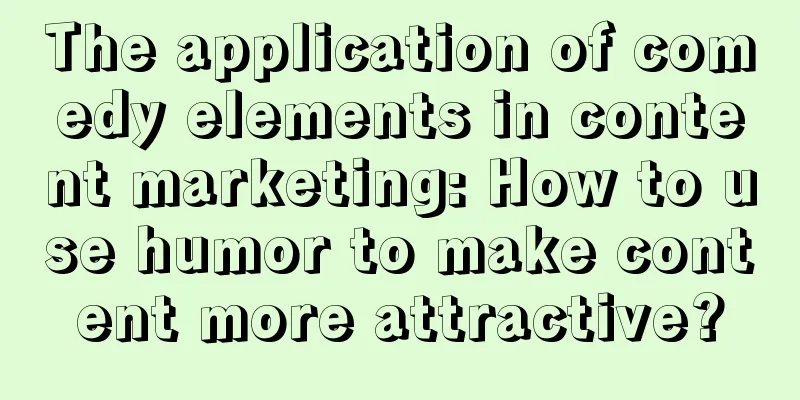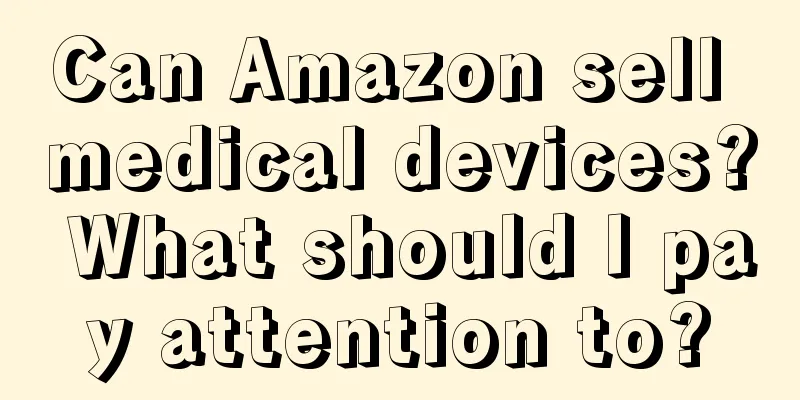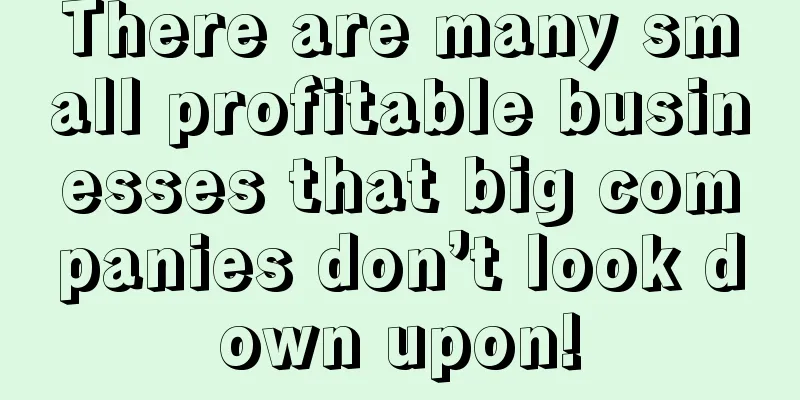If you want to sell goods, go crazy first

Since 2023, a product with a rather "abstract" meaning, Einstein's brain, has appeared in Taobao's annual product list. As many comments have said, the world has finally become insane and I don't understand it. But whether it is buying virtual products such as "Einstein's brain" that many people don't understand, or young people's obsession with "pinching" and "dolls", the essence is emotional consumption. Every generation has its own dilemmas, and for this generation of young people, the divided world may be the biggest dilemma. The tediousness of working in a cubicle, spending 12 hours a day with colleagues who are completely different from you... Young people in the workplace have finally realized that playing the role of an emotionally stable "adult" cannot solve the problem. Only by finding an outlet for negative emotions can they save themselves from mental health problems caused by work. As a result, young people are willing to pay to satisfy their emotions. A series of new consumer products that pay for emotions, such as decompression economy and self-pleasing consumption, have merged with the mainstream of society like a tide along with young people. As a result, we see more and more cases, such as city walks, special forces tourism, temple incense burning, Zibo barbecue, Harbin winter tours, Chinese medicine plum soup, sunbathing, and even the recently emerging sand therapy. Regardless of the actual effect and experience, satisfying one's emotions has become the ultimate motivation for many people to consume. But this series of emotional consumption is accompanied by a lot of controversy, just like the comments on the product Einstein's brain. Those who accept it think that spending a few cents to buy happiness is simply worth it, but for those who cannot understand the emotional value brought by such products, thousands of words ultimately boil down to one word - crazy. Of course, those who commented on this incident as crazy may be labeled with the same comment in other incidents. As more and more "incomprehensible incidents" appear, perhaps a "genius" will be able to gain enlightenment and summarize a new era truth: "It's impossible not to go crazy at work." Since anything beyond the norm would be considered insane, why not just go crazy? Thus, the new era of traffic code on the Internet - crazy literature was officially born. 1. From crazy literature to crazy product promotion, the world has finally become crazy as it likesAs crazy literature becomes more and more popular, the most direct manifestation is that in addition to people going crazy, businesses, brands, and stores also go crazy from time to time. After all, in life, how can we be sober and restrained every day? Whether it is people or brands, they will go crazy occasionally. Since last year, when lifestyle brands but and Lelecha went crazy, crazy marketing has become a new traffic code for brands. If the content of "but" can be considered not too crazy, then the content of "LeLeCha" has a feeling of being somewhat explosive and crazy. Last year, Lelecha launched a new product called One Punch, with a strong man's head printed on the new cup and packaging bag, corresponding to the product theme of "One Punch!" Lelecha's official topic is "One Punch to Blow Up the Earth", leading the way in going crazy, and the packaging bag is changed to "a crushed cup", implying that you can use your fists and feet when you go crazy. This madness even spread to the neighboring coffee market, with Luckin going crazy on Xiaohongshu in the morning when customers most often buy coffee. This year, this trend of brands and consumers going crazy has not only not stopped, but has instead intensified. If a few years ago, the traditional art of workplace self-media was to show off your work badge, then opening social media today will give people a sense of "aesthetics" of time travel. If someone wakes up after being in a coma for five years, I'm afraid they will still ask: "Why haven't the trends changed at all over the years?" It’s just that in the past, I was showing off my serious identity as a big company employee, but now I am showing off “I am getting more and more crazy every day at work.” As a result, "The work badges of those born after 2000 have a slightly crazy feel" quickly became a new hot topic on Xiaohongshu. Image source: Xiaohongshu@Workers Care Center However, if the screen savers and ornaments in the past still needed to "avoid" leaders and secretly connect and communicate with colleagues who recognized each other as equals, today's work name card declarations mean that this crazy and straightforward form of expression has become the mainstream culture in the workplace. However, this time it’s not just the working people who are going crazy. Brands are also participating in this crazy “wave” as always, hoping to find new and younger ways of communication in this feast of traffic. For example, Deyou focused on the joke that going to the toilet at work = paid slacking off. Tencent Meeting attracted a lot of attention with its contrasting feeling of "I am using a meeting software, but I don't want to attend a meeting at all". Just like using cat memes to make videos, the brand uses crazy work badges as a communication carrier, and through the sense of contrast, creates a personality that resonates with workers. It is obvious that crazy literature related to migrant workers will continue to emerge in an endless stream and remain popular. In fact, to some extent, we can even say that crazy literature has almost become a new "mainstream" in brand marketing. But simply riding on the popularity is obviously not enough. Only by delving into the depths of popular culture and truly understanding the preferences of young people or target groups can we truly create popular memes, rather than being evaluated like the cat meme: "The first person who did it is a genius, the second person who did it is a smart person, but the third and later are not very smart, and even annoying." So, what is behind crazy literature? 2. Go crazy when you are undecidedAccompanying crazy literature is the enormous mental pressure on young people. Social development always revolves around huge changes, and in the past few decades, the biggest change has been the shift from focusing on the "collective" to focusing on the "individual". From a psychological perspective, in the collective era, the meaning of the individual is given by the collective, and the most important recognition is identity recognition, such as being a certain mother (father), a manager of a certain company (or some other position). The meaning of life is composed of a grand narrative from the small family collective to the large national collective. The meaning of life is often strongly associated with the identity given by the collective. As German sociologist Andreas Reckwitz described our current era in his book The Singular Society, “Today’s institutions and individuals are interested in and strive for uniqueness and being different from others. This carnival of uniqueness marks a structural transformation of modern society. This will largely determine the future of the world.” So, if the keywords of the past are responsibility and obligation, as the times develop and change, when people turn their attention from the collective to the individual, what is the meaning of life? What do I want? What is the meaning of my life or existence? These have become the new "three philosophical questions" that many people frequently ask themselves during late-night EMO. Just like Professor Xu Wenkai of Peking University proposed a new concept in a speech in 2016, called "empty heart disease". Simply put, the so-called "empty heart disease" refers to the fact that many people nowadays do not know why they are alive, nor do they know the value and meaning of life. Not to mention, in most cases, a series of pressures such as life and work have largely hindered people from finding this meaning, and have even become the main push for meaninglessness to some extent. The repetitive life every day and the routine state, everything seems to be caught in an endless cycle, but this era that emphasizes the individual is constantly "oppressing" the individual to find his own meaning. Therefore, under this kind of contradiction and opposition, "going crazy" becomes a natural choice - using one kind of meaninglessness to resist another kind of meaninglessness that is too huge and impossible to break free from. Interestingly, we happen to live in an era deeply influenced by trends. From clothing to eating habits, from entertainment to values, the ubiquitous popular culture seems to always shape our lifestyle quietly. However, before social media became mainstream, the shapers of trends were often those stars shining on the screen and stage. These core figures spread their lifestyles and aesthetic tastes to the public through channels such as television and magazines, thus triggering a series of imitations and followers. And with the advent of the social media era, in addition to the celebrities and KOLs of the past, the public's emotions can also be condensed into a "meme" (a concept widely used in the "SCP Foundation" series, meaning to spread information and trigger abnormal phenomena like a virus infection) and quickly form a new network trend. After reading these two points, we can understand why crazy literature has become a popular trend today. From an emotional perspective, as written in the "2023 National Health Insight Report", 90% of people have health problems, and emotional problems rank second. And the source of these problems is sometimes precisely forced rationality, forced pursuit of logic, and day-to-day normality. When these emotions were "pressure-driven" by certain real-life scenes, people had already been separated from the traditional collective system and could no longer find an emotional outlet within their families. As a result, the typical representative of irrationality, illogicality and abnormality, "going crazy when indecisive", became an emotion that could be cross-infected, and eventually turned into a new "meme" wandering the Internet, gaining widespread recognition and dissemination. 3. Going crazy is just the tip of the emotional icebergMany people are used to interpreting the popularity of emotional consumption such as crazy marketing under the framework of Maslow's hierarchy of needs theory. In the three theories of consumer behavior of Philip Kotler, a famous marketing expert, the three stages of "quantity consumption-quality consumption-emotional consumption" are also regarded as the trajectory of upward demand. In fact, this may have appeared a long time ago. The famous journal PNAS once conducted relevant statistics on millions of books published from 1850 to 2019, and found that the words related to "rationality" in the books increased systematically after 1850, while the words related to "emotion" decreased. However, this trend reversed in the 1980s and became more obvious after 2007. In other words, the shift from rationality to sensibility can almost be said to be a collective representation of the public's mental state in the past few years. This means that, to some extent, the emotional consumption of young people today is not entirely the result of advanced consumption. Instead, it is just the projection of the changing times and the spiritual world of individual changes on the small field of consumption. Perhaps we can say that crazy literature is just the tip of the iceberg, just like the description of the subconscious and conscious in psychology. Perhaps we can say that for consumers, the logic of purchase has gradually changed from simply choosing products in the early days, to expressing positions and ideas through consumption, and then to paying for brands that understand me and play with me. Following the crazy trend can only bring temporary convenience, and truly understanding consumers may bring lasting interaction. Therefore, for brands, perhaps what they need to think about is their own brand positioning and brand concept. For example, among the brands that "chased the hot spots" this time, most of them were fast-moving consumer goods brands such as food and beverages, personal care, and Internet giants. The former are closely connected with the lives of consumers, and the latter have gradually cultivated the "dissolving seriousness" gene of playing memes in recent years. As long as you stand on the same front with the workers, it will be relatively easy to gain favor and favor. On the contrary, if it is a brand that emphasizes "style", such as clothing and beauty brands that tell high-end stories, first-line fashion brands that adhere to specific concepts, or professional outdoor brands that focus on the middle class, it is difficult to gain consumers' favor simply by going crazy, and it may even further bring a strong sense of "dislocation and separation". At this time, for such brands, it is far more important to explore the real emotional demands of consumers hidden under crazy literature than to catch up with the "crazy" traffic express train. After all, crazy literature may become a footnote of the Internet age one day in the future, but crazy literature is also a mirror that reflects people's demand and spiritual demands for multiculturalism in today's era. By Innocent Roland |
<<: Affordable brands turn around: raising prices to increase prices
>>: In the second half of live e-commerce, Xiaohongshu is indispensable
Recommend
What does Amazon KYC audit mean? What are the audit requirements?
Merchants who open stores on Amazon sometimes enco...
Can Russian shopping websites ship directly to China? Which website should I use?
If we want to buy overseas products, we can buy th...
618 e-commerce ads invade content communities
In today’s content communities, advertisements are...
Is there a time limit for companies to settle foreign exchange? How often should they settle foreign exchange?
Foreign exchange settlement by enterprises refers ...
Another round of Amazon account sweeps? How should sellers respond?
Amazon Prime Day is scheduled for July 11 and 12, ...
New rules for Douyin: prohibiting holding orders and live streaming of exams
Recently, Douyin issued two new regulations, but f...
Shopee Taiwan adjusts credit card installment payment service fees
Shopee Taiwan announced that starting from January...
Will Amazon clear my account if I violate the restricted products policy? What are the rules?
On Amazon, everyone generally needs to abide by th...
JD.com leverages 100,000 sales force to follow Meituan’s lead
In 2025, the high-profile launch of JD.com's f...
10 common marketing mistakes made by young people today
Why do young people today often make these 10 comm...
What are the overseas shopping websites? Website introduction
There are domestic shopping websites in China, and...
Which platform is better for Shopee cargo agency? How to choose?
When it comes to Shopee freight forwarding, many n...
What is the Shopee advertising credit recharge exchange rate conversion tool? How to use it?
If a store wants more exposure and traffic, promot...
How can the marketing customer acquisition team be data-driven?
How can the marketing customer acquisition team be...
How long does it take for Shopee to ship? What are the rules?
Shopee is an e-commerce platform in Southeast Asia...









